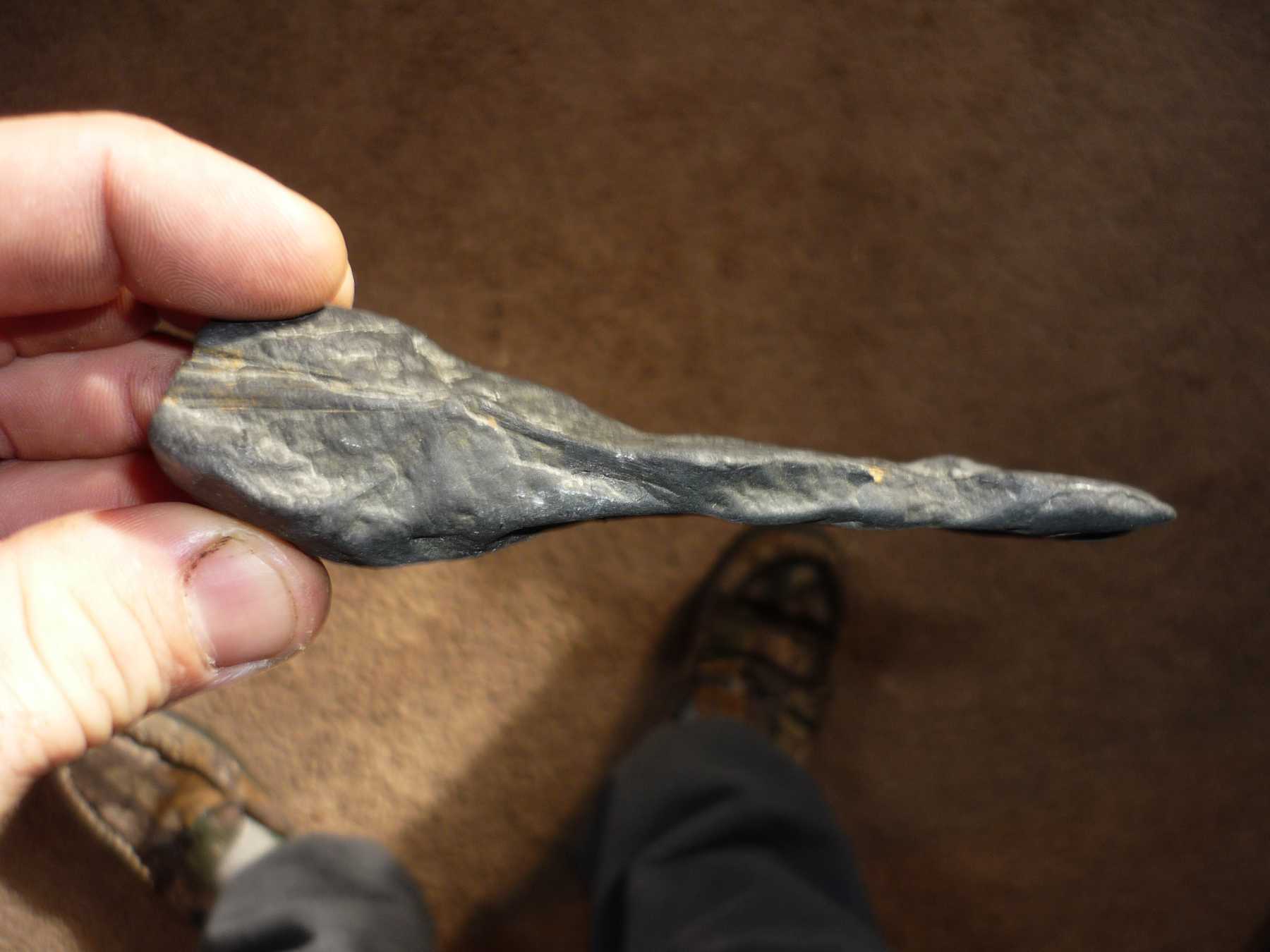I think I'll name my next kid, "Leaverite", Strange name for a Norwegian, but Damn! That name is growing on me and I love a good joke....But not on this post, serious time :silly: I believe this is slate or very similar to it, but no observable sedimentary layering. The sharp edge is beveled on both sides, and unless Jack Frost is yanking my chain,(again), channels running perpendicular to the sharp edge down it on one face...The other side is not channeled, but almost ground smooth and finishes up with a bevel along the whole still somewhat knife sharp edge. It has very uniform back bone with good width for strength and weight. The overall shape appears to be like a tomahawk. In hopes of spitting out a cherry seed, I did get it wet this time for pictures and would love all comments as to if it is something, or if it is a piece of Mother Natures Private Reserve untouched by First People. Thank You, Scott















Comment